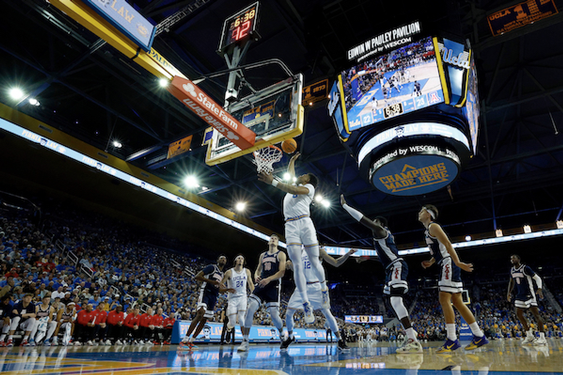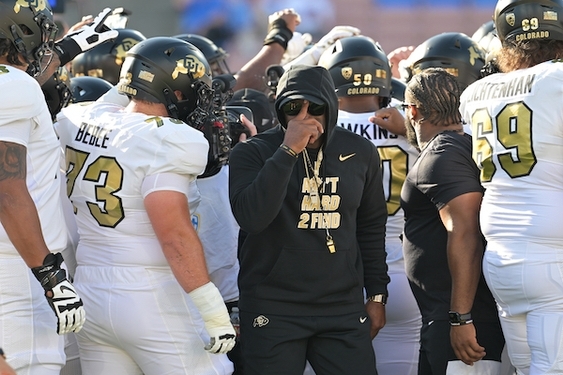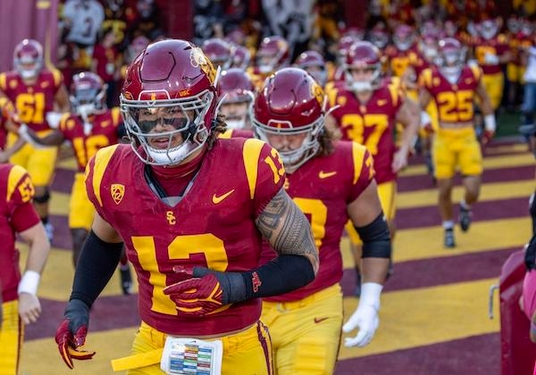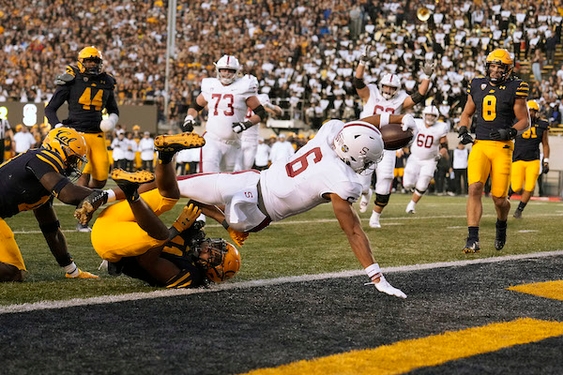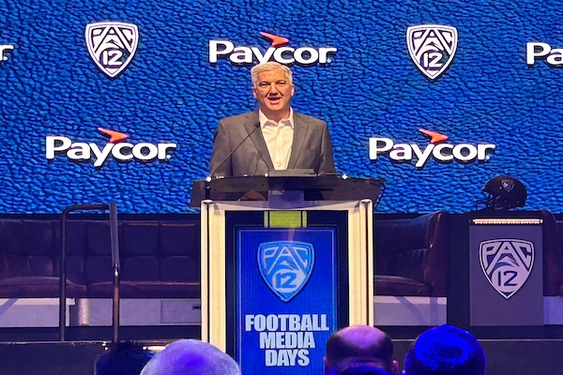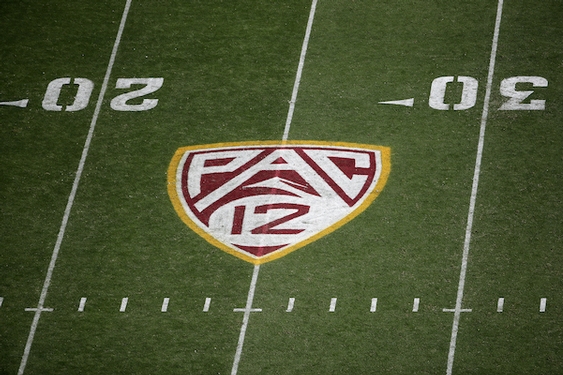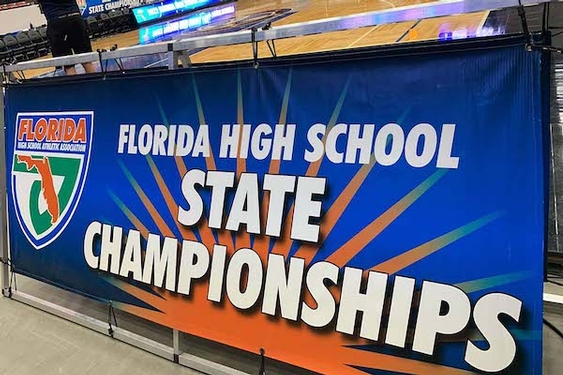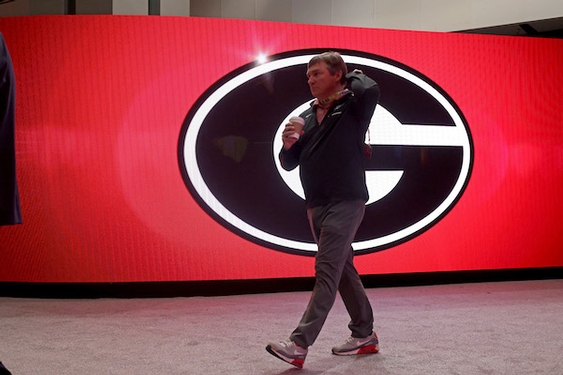It is the Pac-12 Conference, as in 12 members. As in 12 NCAA team championships won in 2017-18 alone.
That was one fewer than its schools won the previous year and one shy of the all-time record that it also holds, and more than the haul of the next two best conferences combined (the ACC and SEC had five each). It was the fourth straight year the Pac-12 hit double figures, the 13th straight year it claimed the most national titles of any conference, the 52nd time in 58 years.
And that doesn’t count the 10 runner-up finishes in 2017-18, or putting two teams in the semifinals 11 times, or putting at least one school in the Final Four of 23 different sports.
Stanford has the most NCAA trophies in history at 117, followed by UCLA (116), followed by USC (106) before it drops off to the Big 12’s Oklahoma State at 52. In 2017-18, six different Pac-12 schools won titles. Over the past two years, 10 of its 12 members have at least one.
The “Conference of Champions.”
The Pac-12 and Commissioner Larry Scott (and Bill Walton) remind you of that constantly in case you forget, which people tend to do. Which is a problem.
Which is the Pac-12’s problem.
We live in what at times can be a morally vacant society, where priority and perspective regularly get twisted. Some people care about rowing and gymnastics and water polo titles, sports where genuine exponents of intercollegiate athletics ply their trade in anonymity. But — just keeping it real here — most people don’t.
They care about football, then men’s basketball, then wonder if ESPN or ESPN2 is televising the spring football game. And right now, the Pac-12 is historically bad at them, perilously close to cyclical becoming collapse.
Pac-12 football teams went 1-8 in bowl games last season, the worst record by a power conference in history, and the lone victory was against West Virginia’s backup quarterback. Three months later, it became the first of the Power 5 conferences since the era commenced in 1996-97 without a team in the final 32 of the NCAA basketball tournament.
This season? The conference of champions went 0-3 against the Mountain West last weekend, including a 38-14 home loss by UCLA and $24 million coach Chip Kelly against Fresno State. Arizona was tied with Southern Utah late in the second quarter. USC was drilled by a ho-hum Texas team.
Basketball is still six weeks away, but the conference’s best returning player, Stanford senior Reid Travis, transferred to Kentucky. Arizona and USC live in the shadow of the FBI’s probe into college basketball.
“I know there are some fans who maybe don’t care about Oregon State winning the baseball College World Series or USC winning women’s track and field,” Scott, the commissioner, said at football media day in July. “That’s what our schools care about.
“There are certainly different ways to measure success in college sports. The scorecard we think matters, and I know our university presidents and athletic directors care about most, is academic and athletic excellence across all sports. And by this measure, we’re achieving unmatched success.”
Except that Scott isn’t paid $4.8 million per year, reportedly the highest of any conference commissioner, to win beach volleyball titles.
He’s paid to maximize broadcast revenues, which is the uncomfortable, inconvenient reality of modern collegiate sports as much as our antiquated, romantic, “Chariots of Fire” vision of amateurism wants us to believe it’s not. Even Scott identified himself as a “media executive” this week in a federal trial about whether NCAA athletes should be paid.
And he better hope the judge sides with the NCAA and doesn’t lift restrictions on payments, because the Pac-12, more than any other power conference, won’t be able to afford it.
It is in this anxious, awkward space between morality and money that the Pac-12 exists. The conference of champions … of stuff few care about.
The conference at a crossroads.
The conference with an identity crisis.
The Pac-12 has its priorities right, of course, assuming the mission of intercollegiate athletics is to enhance the educational experience for as many students as possible. Alabama, college football’s perennial champion, offers 16 total sports. Stanford also offers 16 … just for men, with another 19 for women.
Alabama doesn’t care where it winds up in the Directors’ Cup, the annual trophy awarded to the nation’s best overall athletic department. Stanford won it for the 24th straight year (and UCLA was second and USC fourth).
But Alabama belongs to the SEC, where schools are projected to receive $41 million each in bowl and television revenue. Stanford belongs to the Pac-12, where schools get about $10 million less per year and, according to some reports, soon will get nearly $20 million less than the Big Ten.
“The gap between us and the other (power conferences) continues to grow,” Arizona State Athletic Director Ray Anderson told CBS Sports earlier this year. “We’ll be competitively disadvantaged even moreso. … That’s real money, in terms of being able to compete, support facilities, support coaches and support programs.”
One reason for the discrepancy is the struggles of the Pac-12 Network, which airs 800-plus events each year and was created, Scott insists, as a platform to showcase the conference’s prowess in Olympic sports. DirecTV still refuses to carry it, and seven years in the network has not approached the economic windfall that was promised.
It’s not all the Pac-12’s fault. It faces built-in geographic disadvantages, with the concentration of media markets on the East Coast and time zones limiting late-night viewership — the alleged East Coast bias.
And money certainly isn’t the only determinate of athletic success, although it certainly helps when you’re recruiting impressionable 17-year-olds drawn to shiny locker rooms, full stadiums and College Football Playoff berths.
It can be a vicious cycle, too, with the Pac-12’s national TV contracts expiring in 2024 (and negotiations likely beginning a year earlier). The worse you are in football and men’s basketball, the lower your broadcast value. And the less money you have to feed the football and men’s basketball arms race, and more resources you have to commit to non-revenue sports, the worse you get.
The Big Ten also stinks in football; it took Ls against Akron, Troy, Temple, South Florida and BYU just last weekend alone. The difference is, with $51 million per school in bowl and TV revenue, they’ll have the cash to dig out.
Meanwhile, other fall sports are a month into their seasons. The conference of champions has the top four ranked teams in men’s water polo, three of the top four in women’s cross country, the No. 1 team in women’s soccer and the three-time defending champion in men’s soccer.
———
©2018 The San Diego Union-Tribune
Visit The San Diego Union-Tribune at www.sandiegouniontribune.com
Distributed by Tribune Content Agency, LLC.




